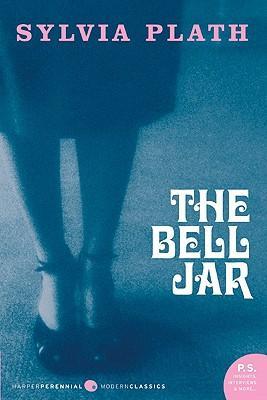- The Good: Sincere and accessible depiction of the mental health struggles of a wealthy young white lady in mid-20th century America
- The Bad: Depressing, as to be expected, but also racist
- The Literary: Prose written by a poet
Esther Greenwood excels in her undergraduate program, and she’s awarded with an internship at Ladies Day magazine in New York City. She tries to throw herself into the big-city lifestyle and be as excited about fashion as the other girls. Like most teenagers, she struggles with the balance of appearing cool while also performing well.
But unlike everyone else, Esther isn’t happy with the limited options available to women, from her mother coaching her on how to be a pure and faithful wife, to her mentors who happily discuss recipes and beauty products that are the acceptable topics for women writers to publish. She is drawn to Doreen, a rebellious, sarcastic smoker, but Doreen puts her in uncomfortable and eventually dangerous circumstances that only add to Esther’s anxiety and distrust of men.
In the book jacket, The Bell Jar is described as a descent into Esther’s insanity. But Esther isn’t insane. She’s depressed and crippled by perfectionism. She sees the shallowness of those around her, the injustices in the world to which no one pays attention, and the few acceptable paths available to her. Esther’s identity centers around succeeding academically, but when she realizes that’ll soon be over, she can’t generate any passion for taking up stenography, marrying a doctor, and having a family, which is the path her mother wants for her.
I find the first half of the book completely relatable, and my own experience as a teenage girl resonates deeply with Esther’s story. There’s no madness in Esther. Maybe a touch of drama, but it’s the world that’s crazy. When she returns home from the internship and her mother tells her she wasn’t accepted for the writing course she applied to, Esther is devastated. She decides to spend the summer writing a novel, then decides she hasn’t lived enough to tell a convincing story.
The second half of the book is where Esther starts to unravel. She can’t sleep. She barely eats. She falls deeper into her own depression. No one asks her how she’s doing or how she’s feeling. She goes to several doctors to understand why she can’t sleep. A patronizing psychiatrist prescribes electric shock therapy, which is poorly administered and further traumatizes Esther. Soon after, she attempts suicide, as the options available to her shrink away.
I completely see why this book is so popular. First off, the prose is gorgeous, sharp, with insightful descriptions. Second, Esther is just a normal girl who questions her socially acceptable identity. The oppressive patriarchal society in mid-20th-century America only gives a few options for Esther, and all of them are in opposition to her true self. She sees the gross inequalities between men and women, especially surrounding sex.
Esther’s affection for her high school sweetheart Buddy wanes quickly, especially upon learning that he lost his virginity over the summer to an older woman. Shocked, Esther is angry that neither Buddy himself nor anyone else considers that to be unreasonable for a man, when she’s been told her entire life to save herself for her future husband. She loses respect for Buddy and finds him to be the biggest hypocrite of all. Buddy falls ill with tuberculosis, and she eventually breaks up with him. After each of their own long recoveries, they reunite towards the end of the book, and he proposes to her. When Esther rejects him, he calls her crazy.
Of course, this novel is difficult to read because of the mental health issues and the traumatizing treatment options available to Esther. Knowing that this novel is semi-autobiographical and that Plath committed suicide soon after its publication means that nearly everyone who’s read The Bell Jar can’t help but associate Plath’s novel with her own death. I admit I expected at least a somewhat self-indulgent melodramatic voice but instead the writing is detached and distant, and you can see the emptiness welling up inside Esther and Plath as the bell jar closes in around them.
Reading the novel with modern eyes, I’m surprised by how little attention is given to Esther’s benefactor, who not only pays for her college but also for her stay in the more effective private mental health hospital. Esther and Plath have the luxury of money and someone looking out for them, encouraging their careers, which seems extremely privileged by today’s standards. Not that money solves all problems, but it doesn’t hurt. In addition, I am very surprised to find that Esther is downright racist and homophobic, in addition to being generally mean, which also taints my reading experience.
Overall though, I’m struck by the sincerity and accessibility of Ether’s internal struggles, and the poetry of the prose. Highly recommended for anyone interested in reading the American classics, feminist literature, and mental health issues.
